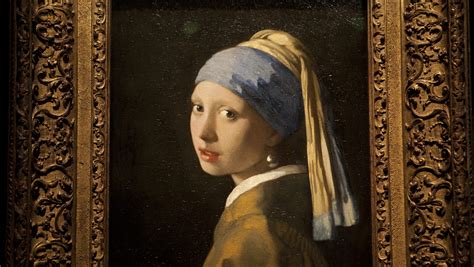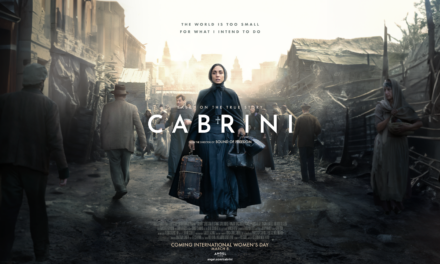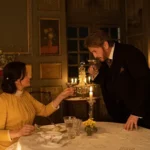Not everybody has easy access to Washington, D.C., but those who do, if they love great painting, will do well to schedule a trip to the National Gallery of Art to see the superb exhibition “Vermeer and the Masters of Genre Painting,” a joint project with the Louvre and the National Gallery of Ireland.
A collection of Johannes Vermeer’s work (in its entirety small but magnificent) would be more than enough for most views, as would a similar gathering of works by other great Dutch painters of the period, Gerard ter Borsch or Gabriel Metsu. But, as the exhibition’s title suggests, this is much more than a collection of Vermeer; it includes predecessors and contemporaries, Borsch, Metsu, Steen, Mieris, among others, arranged according to the principle of genre, that is, similarity of subject, setting, action, class, and profession.
The plan rewards the viewer amply, permitting one to see the various ways in which artistic styles and themes became common property among a class of highly talented men, sometimes working cooperatively, sometimes competitively, or, as the subtitle has it, in “Inspiration and Rivalry.”
“Vermeer and the Masters of Genre Painting” displays genres too numerous to discuss in detail here, covering a wide range of human activities—letter writing, letter receiving, musical performance, business transactions, unexpected arrivals, doctors with patients, women with parrots, and on and on.
From all appearances, there were very few subjects that didn’t interest these artists.
And the results are fascinating. Words cannot and were never meant to fully describe the experience of viewing a great painting, but these works were clearly meant to excite discussion. One example will have to suffice to give some sense of how successfully the exhibition makes the point. Consider Vermeer’s two paintings The Astronomer and The Geographer, well known but rarely seen together.
Happily, the collection at the National Gallery includes both. Aside from the rather intriguing belief that the model in both paintings was Antonie van Leeuwenhoek, developer of the microscope and Vermeer’s neighbor, the pictures yield some insight into the painter’s art of composition and thought.
As in many of the artist’s works, the subject is situated in a fairly small space with plain, grayish walls, near a window (in both of these paintings, visible). In both The Geographer and The Astronomer the solitary figures gaze in left profile, dressed in rather blousy gowns (a banian, similar to a Japanese kimono), blue in color; but where the former, map or book spread before him and geometer’s compass in hand, seems to look out window, the latter, open book on the table, fixes his eyes on a globe, possibly celestial, on which his hand rests.
What do these mean? The organizers of the exhibition have their own ideas, and many who see the paintings will entertain some of them, if not all. Both men are serious, purposeful. The geographer, by profession more earth-bound, applies his knowledge metaphorically from the globe as world before him to the map or book and vice versa; the ready compass, an obvious tool, indicates the useful nature of his work. The astronomer has what appears a compass as well, but it lies idle on the table, partially covered with an ornate cloth or rug, possibly out of mind. The fixed gaze at the globe may be, more or less, absent, indicating his meditation on the small model’s insufficiency in representing something far greater than itself.
Is the astronomer frustrated, amused, or simply lost in thought? It is difficult to say, for his head, unlike the geographer’s, is directed toward the globe to his right, slightly away from the viewer. Still, the emphasis on thought is evident enough.
Should one take interpretation further? The commentary at the exhibition did, suggesting in Vermeer’s two men Aristotelian and Platonic metaphors, practical and theoretical figures. And it may be so; but appealing and intelligent as the idea is—an idea older than Plato—it cannot sum up the beauty in ingenuity of Vermeer’s execution and the fascinating glimpse into a moment in the lives of two the seventeenth-century scientists.
Yet that’s not the all this particular genre in the collection has to offer. A third painting is exhibited, Astronomer by Candlelight by Garrit Dou; painted in 1665, it actually precedes Vermeer’s similar works by three (The Astronomer) and four (The Geographer) years. The influence, then, is of Dou on Vermeer. Not only that, Dou is repeating himself, having painted an earlier version with the same name in 1660.
Dou’s astronomer is quite different from Vermeer’s. For one, his dress is perhaps more contemporary; he’s less a man of the world, more a type from the streets of Delft or Harlaam. Strikingly, he works in a dark room—no window or much else in sight—and, as the title suggests, by candlelight. The effect of light in darkness suggests, to be sure, the mind’s attempt to penetrate the unknown. The candle has burnt for some time but is far from spent; an hourglass to the viewer’s left shows plenty of sand, but the darkness also establishes firmly the ignorance in which the work proceeds. The light is artificial. The astronomer himself looks fairly young, his hand on a globe (a detail Vermeer included), but on what looks to be a globe of the world; in the same hand is a compass. He attends wholly to a book, which the other hand holds open to a particular page. The connection of learning (the book) to phenomenon (at least, as representation in the globe) presents itself.
Although it is not in the collection, Dou’s 1660 version of the same subject is subtly different—as, by extension, it is from Vermeer’s. In that painting the astronomer is older, the candle shorter, the grains of sand in the upper half of the glass fewer and it’s tilted as if to arrest the flow. He stares at neither book nor globe but almost forlornly into a space invisible to the viewer. Perhaps the curious thing about the two works is that the older man is followed by the younger: a hopeful sign or a commentary on the optimism of youth that will one day surrender to failure?
As I indicated earlier about the exhibition, this is one example of many, and a rather exalted one, given the high calling of the life of the mind the works depict. But there is so much more: women at their toilettes, scenes in brothels (an especially hilarious one by Frans van Mieris), men and women falling asleep in company high and low, and, strikingly, women holding scales with practical and moral significance. There’s enough to fill up hours, even days of pleasurable viewing, if you, like the young astronomer, have the time.
“Vermeer and the Masters of Genre Painting” continues until January 21, 2018. See it if you can.














